Here is the picture: a beautifully gilded cage, its bars both enchanting and confining, much like the clothing designed to hurt throughout history. You might wonder why people willingly endured the pain of corsets or the agony of foot-binding. These garments were fashion statements but also they were symbols of status and conformity.
While you explore the reasons behind these choices, you’ll uncover the societal pressures and cultural norms that prioritized beauty over comfort. What drives individuals to accept discomfort in the name of aesthetics, and how have these practices evolved? There’s more beneath the surface.
The Pain of Corsets
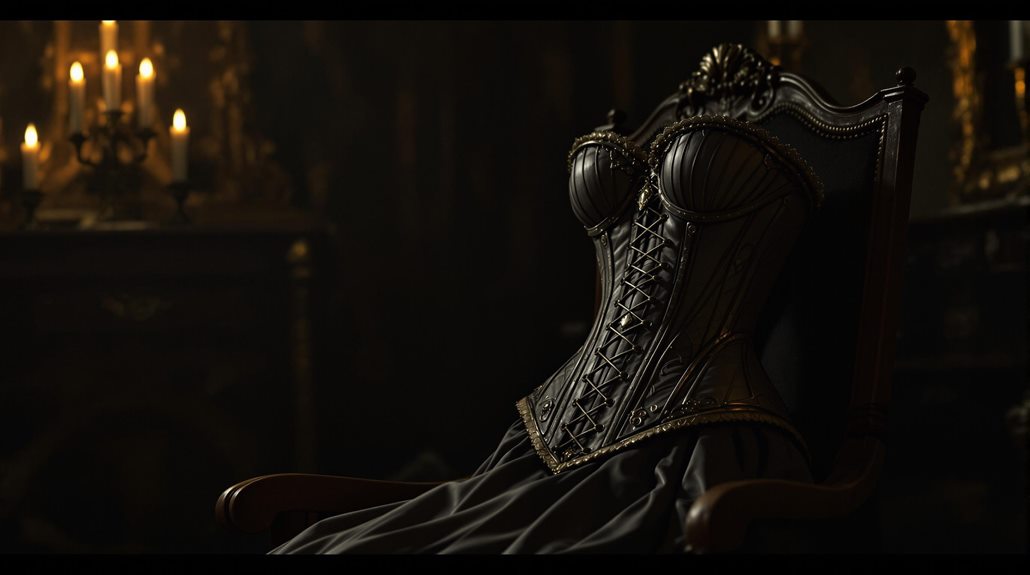
Amidst the historical allure of fashion, corsets stand out as a symbol of beauty that often came with a hefty price to personal comfort. Squeezing into a garment made of whalebone, steel, or heavy fabrics—corset materials that molded your body into the “ideal” shape was not easy. Throughout history, societal expectations dictated that a cinched waist was the epitome of elegance. The corset’s influence on body image was profound, shaping waists but also perceptions of femininity.
In the 19th century, societal pressures to fit into these restrictive garments were immense. It was as if a collective sigh echoed through the ages: “Breathe? Who needs to do that comfortably?” Historical influences, like Queen Victoria’s era, reinforced this fashion, making it a staple in wardrobes despite its discomfort.
The health consequences? Not to be overlooked. Wearing corsets for extended periods could lead to fainting, deformed ribs, and even digestive issues. It’s as if every gasp for air came with a reminder of beauty’s cost. So, next time one admires a vintage corset, remember, it’s a relic of a time when fashion often trumped comfort in the pursuit of societal ideals.
Foot-Binding Traditions
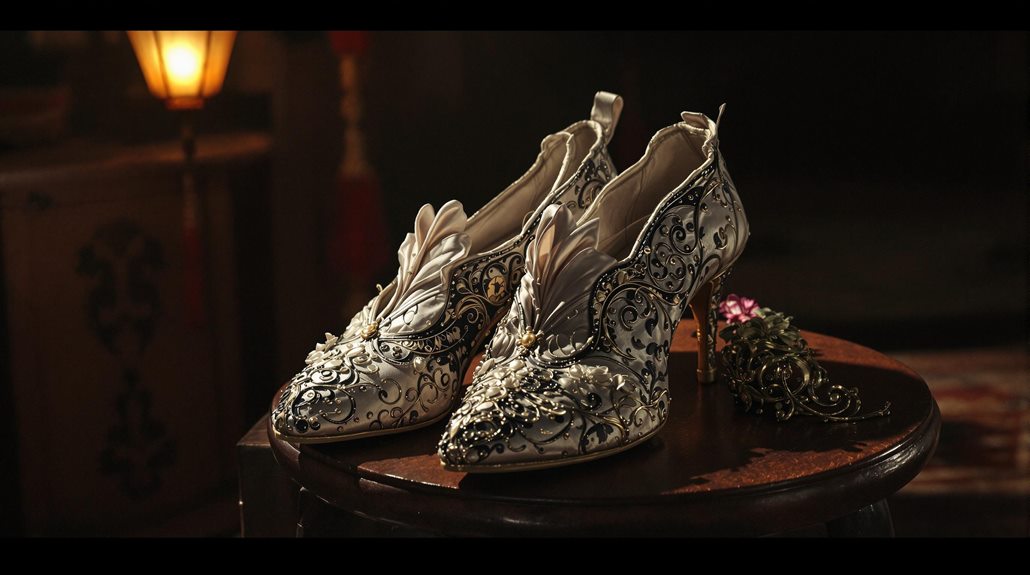
Yes: the delicate, yet excruciating practice of foot-binding, a tradition that held sway over Chinese society for centuries. You might cringe at the thought of tightly binding young girls’ feet to achieve the coveted “lotus foot,” a symbol of beauty and status. This practice was about aesthetics but it also carried deep cultural significance. Foot-binding was seen as a rite of passage and a way to secure a good marriage, reflecting the historical practices that shaped women’s roles in society.
As you ponder the psychological effects, consider how it molded not just feet but minds, too. The pain and limitations became part of their identity, a constant reminder of societal expectations. Yet, modern perceptions often view foot-binding with a mix of horror and fascination, as if trying to comprehend why such a tradition persisted.
It’s worth noting that alternative traditions existed, like the Miao women’s elaborate silver headdresses, celebrating beauty without the pain. While foot-binding is now outlawed, it leaves a fascinating, albeit uncomfortable, legacy. So, next time you complain about your shoes, remember those tiny lotus feet and perhaps chuckle at how far we’ve come—or not!
High Heels and Discomfort
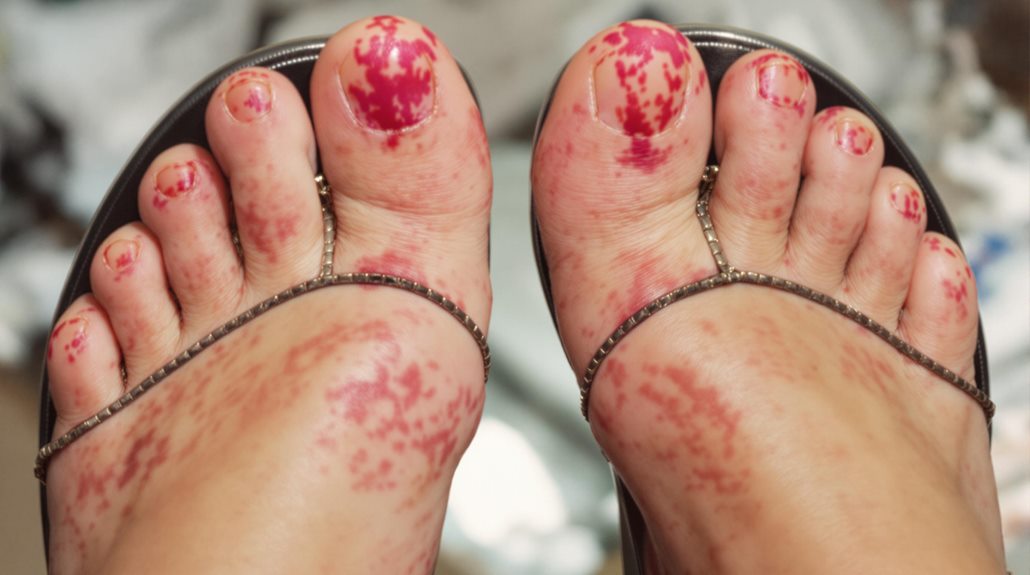
While foot-binding might be a relic of the past, modern society still adopts fashion choices that prioritize appearance over comfort. High heels, for instance, have become a staple in wardrobes, their sleek design often overshadowing the discomfort they bring.
You might wonder why we continue to welcome such shoes. The answer lies in their cultural significance and historical evolution. High heels have long symbolized elegance and status, dating back to the 17th century when European aristocrats strutted around in them to display their wealth.
Over time, these fashion choices have evolved, but the psychological impact remains. Wearing high heels can boost confidence, making you feel taller and more powerful. However, societal pressures often push you to endure the pain for the sake of appearance, turning a blind eye to the blisters and aching arches that accompany a night out in stilettos.
It’s almost as if we’ve entered an unspoken agreement with our shoes: they’ll make us look good, and in return, we’ll accept the discomfort. So next time you’re slipping on those sky-high pumps, remember, you’re not alone in this fashionable yet painful dance.
The Agony of Stiff Collars
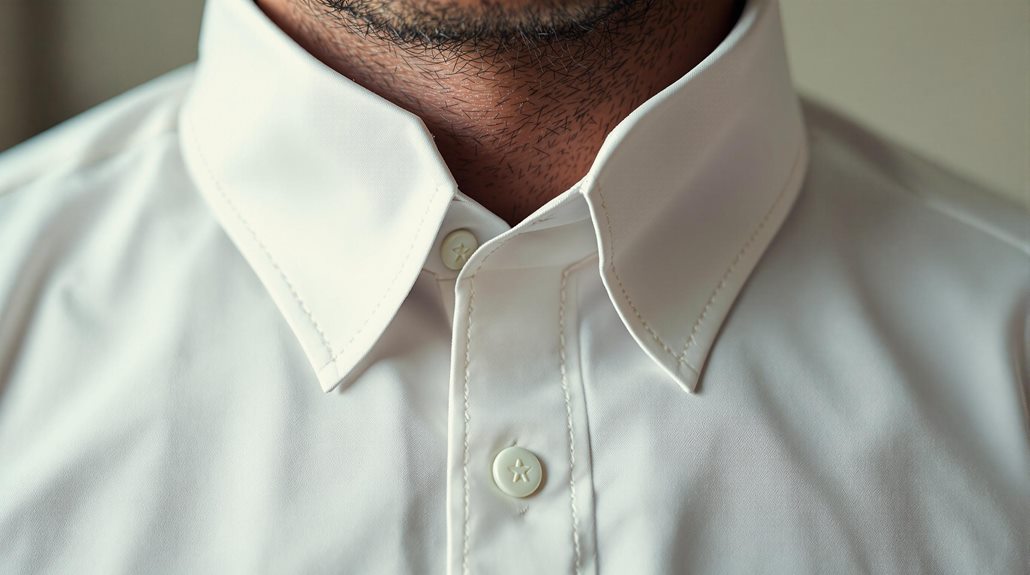
Picture a gentleman of the late 19th century, dapper and poised, yet silently enduring the discomfort of a stiff, starched collar. You can almost see him standing there, collar stiffness forcing his neck into an unnaturally upright position. This was a time when historical fashion dictated that such discomfort was the price of social expectations. Men were expected to appear presentable and dignified, even if it meant tolerating a bit of neck strain.
These collars weren’t just stiff—they were practically ironclad. Starched to perfection, they offered little mercy to the necks of those who wore them. It’s hard not to chuckle at the thought of these poor souls, their heads barely able to turn without wincing. Yet, back then, the agony of stiff collars was simply part of the sartorial game.
As garment evolution unfolded, fashion mercifully began to favor comfort over rigidity. Today’s collars are far kinder, reminding us of how much we’ve progressed. So, next time you button up your soft, flexible collar, spare a thought for those who once bore the burden of fashion’s demanding past. They might just appreciate the nod.
Spiked and Studded Apparel
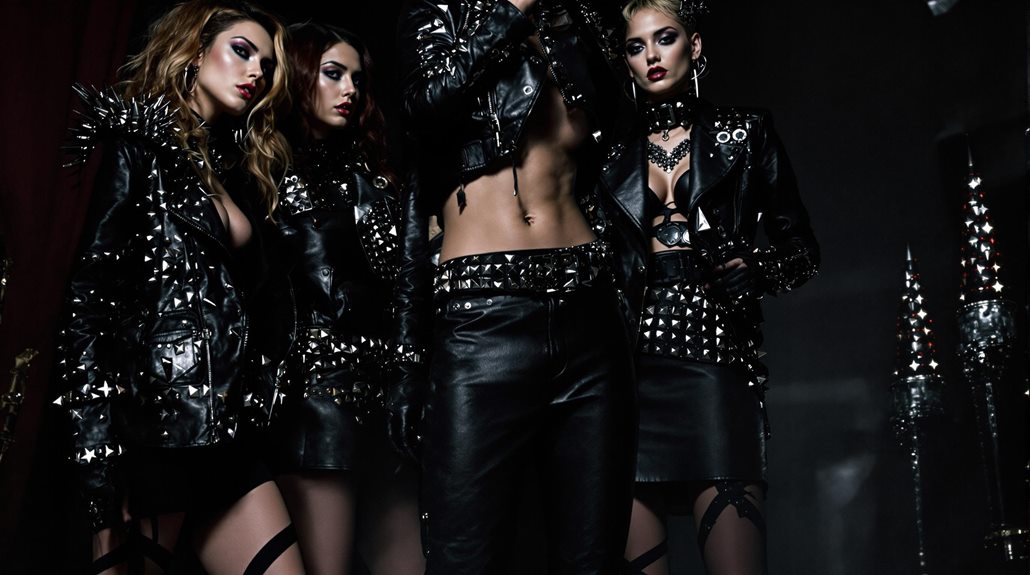
As we leave behind the era of stiff collars, we move into a different domain of fashion discomfort: spiked and studded apparel. Imagine donning a spiked jacket, where each sharp spike serves as both a fashion statement and a warning sign. You’re adopting a style that’s as much about appearance as it is about the thrill of rebellious trends. This painful fashion choice is a bold declaration of individuality and a nod to body modification without the permanence.
Studded accessories often accompany spiked jackets, adding a touch of edgy elegance. But be careful when giving a friendly hug—those studs can feel like tiny pincushions! It’s fascinating how something that causes discomfort can still hold such allure. The roots of this style can be traced back to punk culture, where clothing became a canvas for self-expression and defiance.
In today’s world, wearing spiked and studded apparel is like carrying a piece of history with you, a reminder of fashion’s unyielding ability to challenge norms.
The Drawbacks of Crinolines
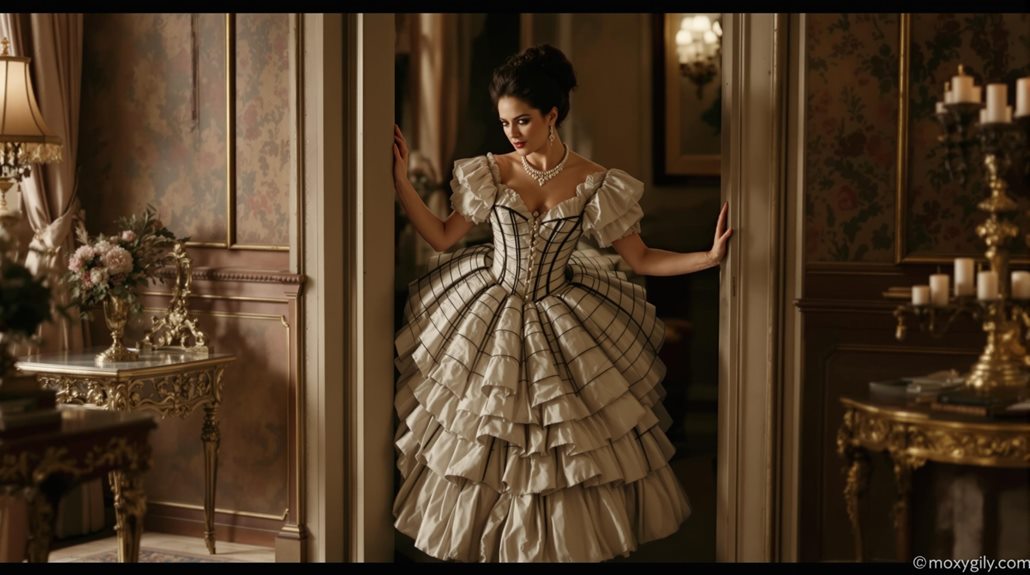
While crinolines might conjure images of elegance and grandeur, they come with their own set of challenges. Imagine donning a hoop skirt, only to find that crinoline constraints hinder your every move. These voluminous skirts, popular in the 19th century, were far from convenient.
Social expectations dictated that women wear them to appear fashionable, but they often found themselves struggling with mobility issues. You might think a grand entrance would be impressive, but try fitting through a narrow doorway without causing a scene!
The fabric discomfort was another downside. Crinolines were made from stiff materials that could feel scratchy and unyielding. Sitting gracefully was a skill you had to master, as the skirt would spring up and expose your ankles in an unladylike manner. From a historical perspective, these garments reflect how fashion sometimes prioritized appearance over practicality.
There’s humor in the absurdity of it all—imagine trying to navigate a crowded ballroom, only to unintentionally sweep a few drinks off a table with a turn. In a world where fashion dictated many choices, crinolines were a demonstration of the lengths people went to for style.
Wrapping up
So, is the pain really worth the beauty? Fashion’s history is filled with tales of discomfort, from corsets squeezing the breath out of people to towering heels that make you wince with every step. While these pieces might make a statement, they also remind us of the lengths people go for style. Maybe it’s time to redefine beauty as something that feels just as good as it looks!




